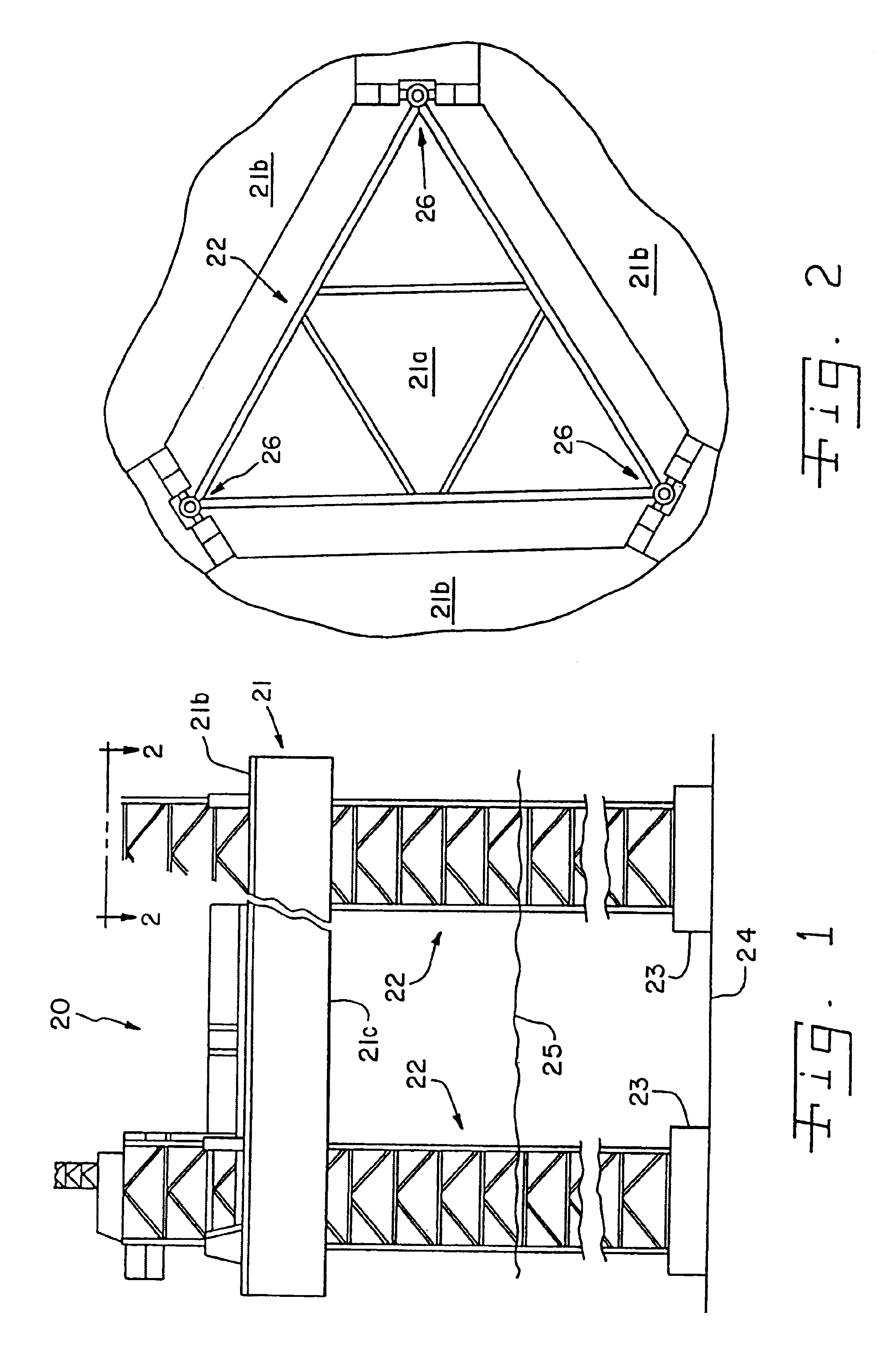Jack-up apparatus for marine-based platforms
a technology of jacking apparatus and platform, which is applied in the direction of caissons, drilling pipes, scaffolds, etc., can solve the problems of high shear force, high labor intensity, and high cost of construction methods, and achieves easy and inexpensive design and scale, reliable load handling, and save millions of dollars in manufacture.
- Summary
- Abstract
- Description
- Claims
- Application Information
AI Technical Summary
Benefits of technology
Problems solved by technology
Method used
Image
Examples
Embodiment Construction
[0032]FIG. 1 illustrates a jack-up MODU 20 at an offshore drilling site. MODU 20 comprises a platform structure 21, and a plurality of MODU supporting legs 22. Jack-up MODU 20 also includes a jacking system, as described herein, to provide relative motion between the MODU platform 21 and the plurality of supporting legs 22. As illustrated in FIG. 1, MODU platform 21 is supported by the MODU legs 22 from the earth's surface (because of their length, the MODU supporting legs 22 are shown only in part in FIG. 1) substantially above the water level 25.
[0033]As constructed and transported, the MODU platform 21 is in a position closely adjacent leg footings 23. The MODU platform 21 is buoyant so the MODU 20 comprises a vessel which can be towed to an exploration site. At the exploration site, the supporting legs 22 are lowered by the jacking system with respect to the platform 21 until the footings 23 reach the earth's surface 24, and the platform 21 is thereafter lifted by the jacking sy...
PUM
 Login to View More
Login to View More Abstract
Description
Claims
Application Information
 Login to View More
Login to View More - R&D
- Intellectual Property
- Life Sciences
- Materials
- Tech Scout
- Unparalleled Data Quality
- Higher Quality Content
- 60% Fewer Hallucinations
Browse by: Latest US Patents, China's latest patents, Technical Efficacy Thesaurus, Application Domain, Technology Topic, Popular Technical Reports.
© 2025 PatSnap. All rights reserved.Legal|Privacy policy|Modern Slavery Act Transparency Statement|Sitemap|About US| Contact US: help@patsnap.com



